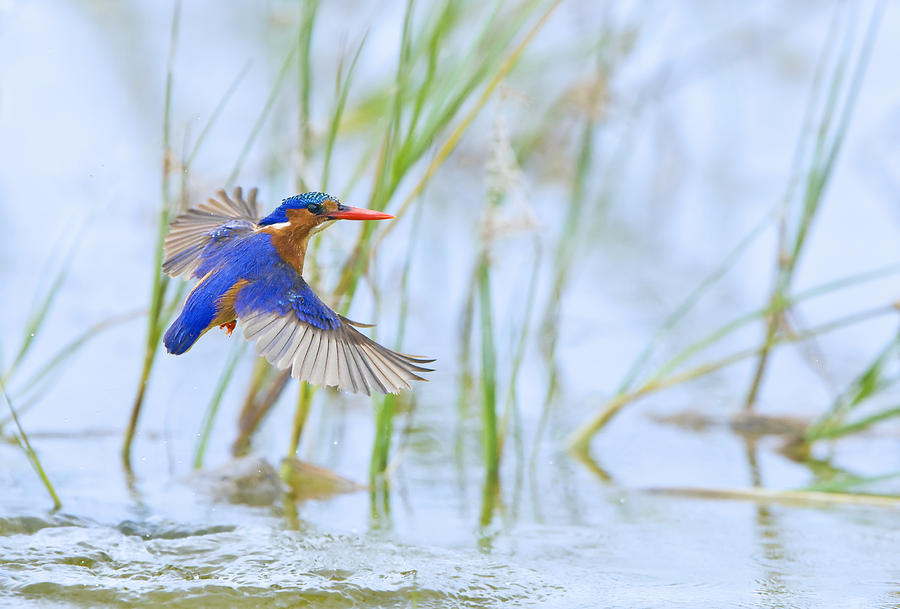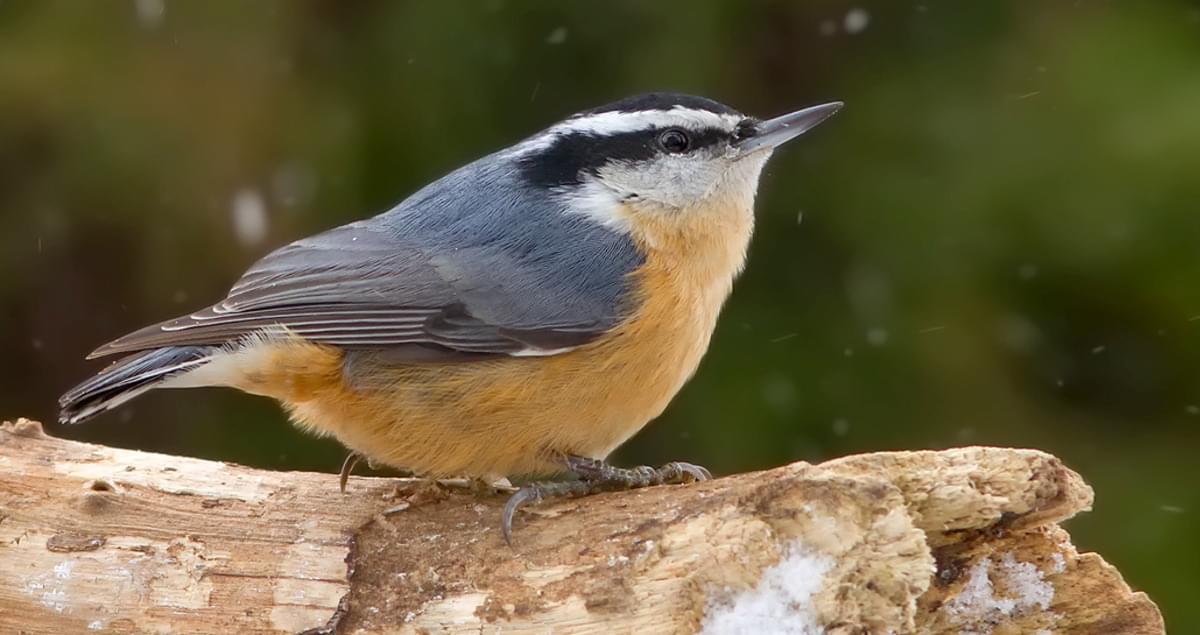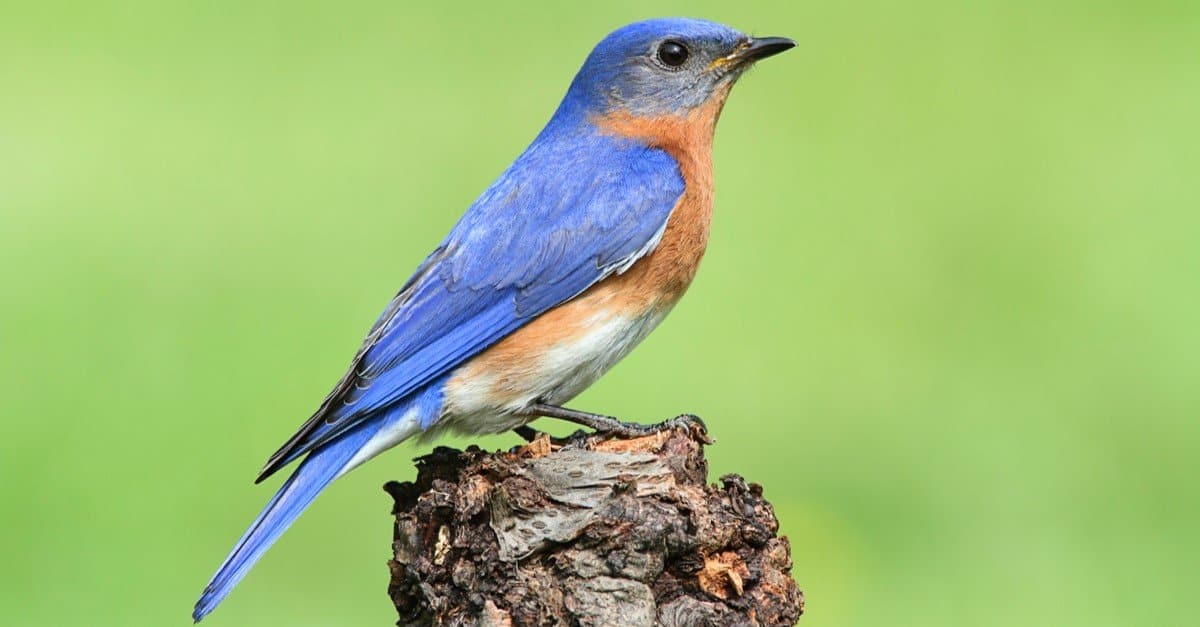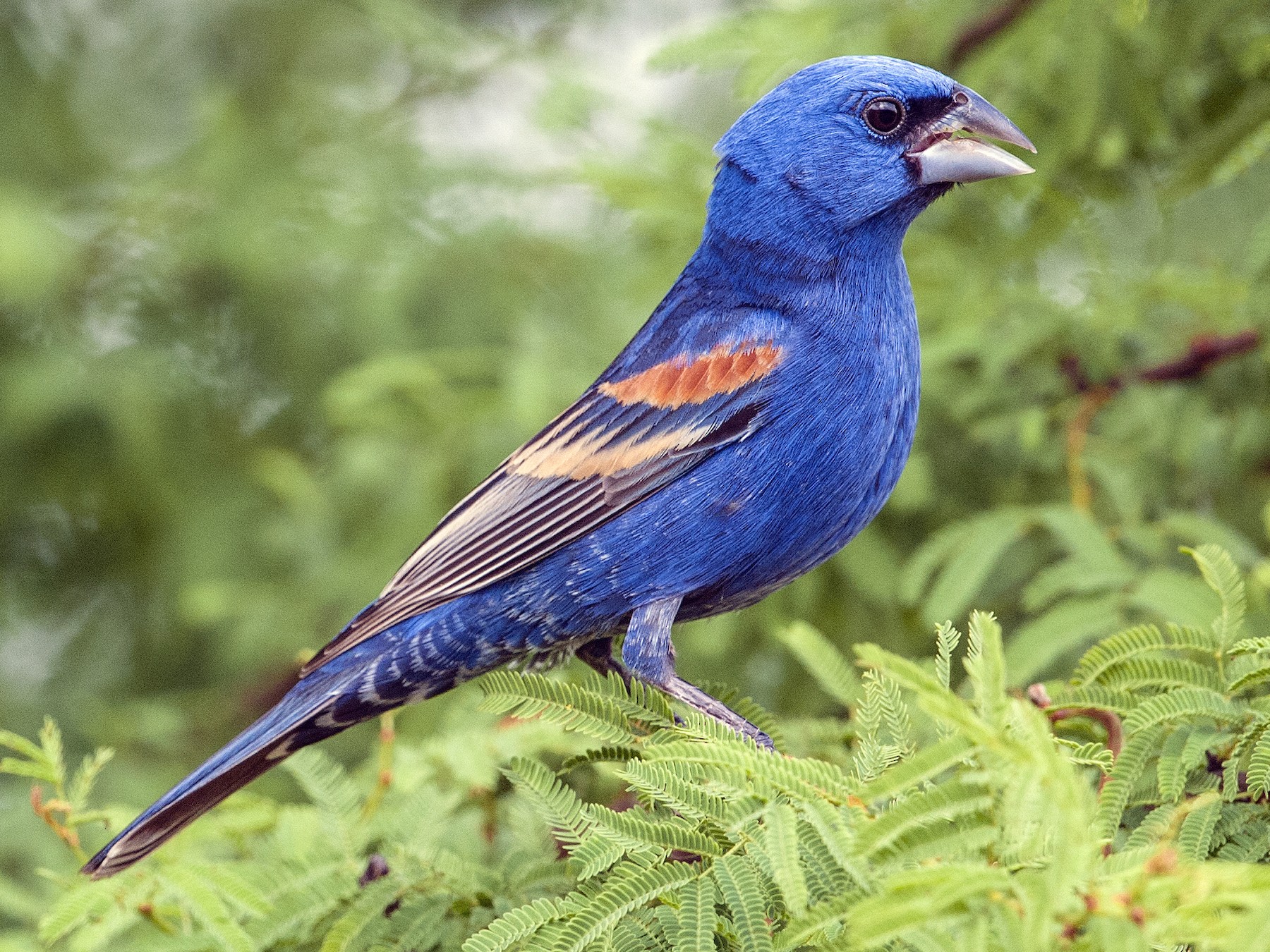Blue and orange birds are some of the most beautiful and striking birds in the world. Blue is a rare color in nature, and birds have to use other means to be perceived as blue.
The structure of their feathers and the way light interacts with them creates the blue color we see. Orange, on the other hand, is a more common color in birds.
You are reading: 8 Types Of Blue And Orange Birds
In this article, we will explore eight types of blue and orange birds, including their physical characteristics and habitats.

8 Types Of Blue And Orange Birds
Belted Kingfisher
The Belted Kingfisher (Megaceryle alcyon) is a large, conspicuous water kingfisher native to North America. Here are some interesting facts about the Belted Kingfisher:
Physical Characteristics:
– Stocky, large-headed birds with a shaggy crest on the top and back of the head.
– Straight, thick, pointed bill.
– Legs are short and their tails are medium length.
Habitat:
– Common along streams and shorelines across North America.
– Forages by plunging headfirst into water, capturing fish near the surface with its bill.
– Watches for fish from branch, wire, rock, or other perch above water, or may hover above water before diving.
– Perches on riverside branches and telephone wires.
Diet:
– Mostly small fish, usually those less than 4-5″ long.
– Also eats crayfish, frogs, tadpoles, aquatic insects, mollusks, small crustaceans, small mammals, small birds, reptiles, and berries.
Conservation Status:
– Recent surveys indicate declines in population.
– May be vulnerable to loss of nesting sites and to disturbance during breeding season.
– Listed as of least concern in the IUCN Red List.
Backyard Tips:
– Belted Kingfishers sometimes come to backyards that contain ponds or goldfish pools, often to the dismay of the homeowners.
Red-Breasted Nuthatch

The Red-Breasted Nuthatch (Sitta canadensis) is a small songbird that is native to North America. Here are some interesting facts about the Red-Breasted Nuthatch:
Physical Characteristics:
– Measures 4.5 inches (11 cm) in length, with a wingspan of 8.5 inches (22 cm) and a weight of 9.9 grams (0.35 oz).
– Blue-gray upperparts with cinnamon underparts, a white throat and face with a black stripe through the eyes, a straight grey bill, and a black crown.
– Black cap and eye line, broken up by a white stripe over the eye.
– Sexes are similarly plumaged, though females and youngsters have duller heads and paler underparts.
Habitat:
– Found in coniferous and mixed forests across North America.
– Forages by gleaning its way up and down tree trunks and branches, searching for insects and spiders in the spring and summer, and eating many seeds, especially those of conifers, in the winter.
Conservation Status:
– Listed as of least concern in the IUCN Red List.
Backyard Tips:
– Red-Breasted Nuthatches are tiny, active birds that can be attracted to feeders with sunflower seeds, peanuts, and suet.
Eastern Bluebird

The Eastern Bluebird (Sialia sialis) is a small migratory thrush found in open woodlands, farmlands, and orchards across North America. Here are some interesting facts about the Eastern Bluebird:
Physical Characteristics:
– Male Eastern Bluebirds have a bright-blue breeding plumage on the back and head, and warm red-brown on the breast, while females have a grayer plumage with blue tinges in the wings and tail.
– They have a big, rounded head, large eye, plump body, and alert posture.
– They are about two-thirds the size of an American Robin, measuring 6.3-8.3 inches (16-21 cm) in length, with a wingspan of 9.8-12.6 inches (25-32 cm) and a weight of 1.0-1.1 ounces (28-32 g).
Habitat:
– Eastern Bluebirds are found east of the Rockies, southern Canada to the Gulf states, and southeastern Arizona to Nicaragua.
– They can be found in open country with patchy vegetation and large trees or nest boxes, such as meadows, old fields, and golf courses.
– They typically sit in the open on power lines or along fences, with an alert, vertical posture.
Diet:
– Eastern Bluebirds feed on insects, such as grasshoppers, crickets, and beetles, and other invertebrates, such as spiders and snails, during the breeding season.
– They also eat fruits, such as elderberries, dogwood berries, and wild grape, during the winter.
Conservation Status:
– In the past, Eastern Bluebirds declined seriously in many areas with loss of habitat and loss of nesting sites, but during recent decades, they have been increasing again, undoubtedly helped by birdhouses.
– Listed as of least concern in the IUCN Red List.
Backyard Tips:
– Eastern Bluebirds can be attracted to backyards with nest boxes and mealworms.
Western Bluebird
The Western Bluebird (Sialia mexicana) is a small North American thrush that breeds throughout much of the western United States, Mexico, and southwestern Canada. Here are some interesting facts about the Western Bluebird:
Physical Characteristics:
– Adult males have a brilliant blue head, back, and wings, with deep orange breast and sides, and a white belly.
– Females are grayer overall with a blue tinge to the wings and tail, and an orange-brown breast and sides.
– They measure 5.5-7.1 inches (14-18 cm) in length, with a wingspan of 9.8-11.8 inches (25-30 cm) and a weight of 0.8-1.1 ounces (23-31 g).
Habitat:
– Western Bluebirds are found in open woodlands, farmlands, and orchards.
– They forage by perching on low branches or wires, and dropping to the ground to catch insects.
– They also eat berries and other fruits, especially in the winter.
Breeding:
– Western Bluebirds breed from March to August, and may raise two broods per year.
– They nest in natural cavities, such as old woodpecker holes, or in nest boxes.
– Females lay 3-7 eggs, which are incubated for 13-15 days.
– Both parents feed the young, which fledge after 17-21 days.
Conservation Status:
– In recent decades, numbers have increased in many areas, thanks to nest box programs and other conservation efforts.
– Listed as of least concern in the IUCN Red List.
Backyard Tips:
– Western Bluebirds can be attracted to backyards with nest boxes and mealworms.
Barn Swallow

The Barn Swallow (Hirundo rustica) is a passerine bird that is the most widespread species of swallow in the world, with a natural distribution of over 251 million square kilometers globally. Here are some interesting facts about the Barn Swallow:
Physical Characteristics:
– Barn Swallows have blue upperparts and a long, deeply forked tail, with a rusty-orange throat and forehead, and a pale orange chest and underside.
– They are about 5.9-7.5 inches (15-19 cm) in length, with a wingspan of 11.4-12.6 inches (29-32 cm) and a weight of 0.6-0.7 ounces (17-20 g).
Habitat:
– Barn Swallows are found in open or semi-open land, farms, fields, marshes, and lakes across North America.
– They forage by flying low over fields and water, catching insects in mid-air.
– They build mud nests under the eaves of barns and stables, on structures near playing fields, or under bridges.
Breeding:
– Barn Swallows breed from April to September, and may raise two or three broods per year.
– Females lay 3-7 eggs, which are incubated for 12-17 days.
– Both parents feed the young, which fledge after 17-23 days.
Conservation Status:
– Local declines noted in a few areas, but still widespread and abundant.
– Listed as of least concern in the IUCN Red List.
Backyard Tips:
– Barn Swallows can be attracted to backyards with mud puddles for nesting materials.
Lazuli Bunting
The Lazuli Bunting (Passerina amoena) is a small songbird that is native to North America. Here are some interesting facts about the Lazuli Bunting:
Physical Characteristics:
– Males have a bright blue head, back, and wings, with a rust-colored breast and white belly.
– Females are brownish-gray with a blue tinge on the wings and tail, and a buffy breast and belly.
– They measure 5.1-5.9 inches (13-15 cm) in length, with a wingspan of 8.7 inches (22 cm) and a weight of 0.5-0.6 ounces (13-18 g).
Habitat:
– Lazuli Buntings are found in brushy habitats, including open woodlands, forest edges, and shrubby fields, across western North America.
– They forage by hopping on the ground, and by gleaning insects from leaves and branches.
– They also eat seeds and berries, especially during the winter.
Breeding:
– Lazuli Buntings breed from May to August, and may raise two broods per year.
– Females lay 3-4 eggs, which are incubated for 12-13 days.
– Both parents feed the young, which fledge after 10-12 days.
Conservation Status:
– Listed as of least concern in the IUCN Red List.
Backyard Tips:
– Lazuli Buntings can be attracted to backyards with sunflower seeds, millet, and nyjer seeds.
Blue Grosbeak

The Blue Grosbeak (Passerina caerulea) is a medium-sized North American passerine bird in the cardinal family Cardinalidae. Here are some interesting facts about the Blue Grosbeak:
Physical Characteristics:
– Males are deep cobalt blue with two brown wing bars, while females are warm brown with scattered blue feathers on the upperparts and two brown wing bars.
– They measure 6.3-7.1 inches (16-18 cm) in length, with a wingspan of 9.8-10.6 inches (25-27 cm) and a weight of 0.8-1.0 ounces (23-29 g).
– They have a large, triangular bill that seems to cover the entire front of its face, from throat to forehead.
Habitat:
– Blue Grosbeaks are found in brushy habitats, including open woodlands, forest edges, and shrubby fields, across the southern United States and northern Mexico.
– They forage by hopping on the ground, and by gleaning insects from leaves and branches.
– They also eat seeds and berries, especially during the winter.
Breeding:
– Blue Grosbeaks breed from May to August, and may raise two broods per year.
– Females lay 3-4 eggs, which are incubated for 11-14 days.
– Both parents feed the young, which fledge after 9-12 days.
Conservation Status:
– Blue Grosbeaks have been expanding their breeding range toward the north in recent decades, and surveys suggest that the overall population is stable or even increasing slightly.
– Listed as of least concern in the IUCN Red List.
Backyard Tips:
– Blue Grosbeaks may be attracted to grains and seeds at feeders in shrubby backyards.
Malachite Kingfisher
Read more : Do Birds Eat Ants?
The Malachite Kingfisher (Corythornis cristatus) is a small river kingfisher that is widely distributed in Africa south of the Sahara. Here are some interesting facts about the Malachite Kingfisher:
Physical Characteristics:
– The Malachite Kingfisher has blue-green upperparts, a rufous breast, and a white belly.
– They measure 4.3-4.7 inches (11-12 cm) in length, with a wingspan of 6.7-7.5 inches (17-19 cm) and a weight of 0.4-0.5 ounces (10-14 g).
Habitat:
– Malachite Kingfishers are found near streams, rivers, and lakes across sub-Saharan Africa.
– They forage by hovering over the water and diving to catch small fish, crustaceans, and insects.
– They also perch on low branches and twigs overhanging the water.
Breeding:
– Malachite Kingfishers breed from August to January, and may raise two broods per year.
– Females lay 2-5 eggs, which are incubated for 16-17 days.
– Both parents feed the young, which fledge after 20-23 days.
Conservation Status:
– Listed as of least concern in the IUCN Red List.
Backyard Tips:
– Malachite Kingfishers are not commonly found in backyards, as they are a species that is native to Africa.
FAQS
1. What are some types of blue and orange birds?
Some types of blue and orange birds include the Eastern Bluebird, Western Bluebird, Lazuli Bunting, Blue Grosbeak, Red-Breasted Nuthatch, Belted Kingfisher, Barn Swallow, and Malachite Kingfisher.
2. What is the physical appearance of the Malachite Kingfisher?
The Malachite Kingfisher has blue-green upperparts, a rufous breast, and a white belly. They measure 4.3-4.7 inches (11-12 cm) in length, with a wingspan of 6.7-7.5 inches (17-19 cm) and a weight of 0.4-0.5 ounces (10-14 g).
3. What is the habitat of the Blue Grosbeak?
Blue Grosbeaks are found in brushy habitats, including open woodlands, forest edges, and shrubby fields, across the southern United States and northern Mexico.
4. What is the conservation status of the Eastern Bluebird?
The Eastern Bluebird is listed as of least concern in the IUCN Red List.
5. How can I attract Lazuli Buntings to my backyard?
Lazuli Buntings can be attracted to backyards with sunflower seeds, millet, and nyjer seeds.
6. How do blue birds get their blue color?
Blue birds get their blue color through the interaction of light and nanostructures in the feathers consisting of air and keratin that reflect blue light.
Source: https://petstutorial.com
Category: Birds










